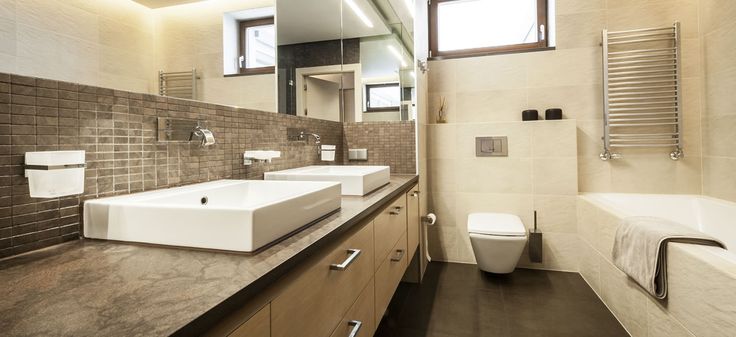Compact bathrooms, while often challenging to design, hold immense potential for transformation into highly functional and aesthetically pleasing spaces. The key to a successful small bathroom makeover lies in intelligent space-saving designs that maximize every inch without compromising on style or comfort. For homeowners looking to make their compact bathroom feel larger, more efficient, and truly luxurious, focusing on clever layouts, integrated fixtures, and visual tricks is paramount.
Optimizing Layouts for Maximum Flow
The fundamental step in any small bathroom renovations is to meticulously plan the layout. Even minor adjustments can significantly impact the perceived and actual space.
- Floating Vanities: Opt for wall-mounted or floating vanities. By lifting the vanity off the floor, you create an illusion of more open space beneath, making the room feel larger and airier. This also simplifies floor cleaning.
- Corner Sinks: In extremely tight layouts, a corner sink can be a game-changer. It frees up valuable wall space that a traditional vanity might occupy, allowing for better traffic flow or the placement of other essential fixtures.
- Pocket or Sliding Doors: Traditional swing doors require a significant clear swing radius, which eats into precious floor space. Replacing them with pocket doors that slide into the wall or stylish barn doors that slide along the wall can reclaim this lost area, making the bathroom feel more open and accessible.
- Shower Nooks and Wet Rooms: Instead of a bulky, enclosed shower cubicle, consider designing a shower nook that is integrated into the bathroom’s architecture. For the ultimate space-saving solution, a wet room design, where the entire bathroom floor is waterproofed and slopes to a central drain, eliminates the need for a shower tray and creates a seamless, expansive feel.
Smart Fixture and Material Choices
The selection of fixtures and materials can dramatically influence how spacious a small bathroom feels.
- Wall-Hung Toilets: These toilets are mounted to the wall, with the cistern hidden within the wall cavity. This design frees up floor space beneath the toilet, making the room appear larger and easier to clean.
- Transparent Shower Screens: Ditch opaque shower curtains or frosted glass enclosures. Opt for clear, frameless glass shower screens. This allows light to pass through and visually extends the space, making the bathroom feel continuous and open.
- Sleek, Minimalist Fixtures: Choose slim-profile faucets, showerheads, and accessories. Bulky fixtures can visually clutter a small space. Wall-mounted faucets can also save a few inches on the vanity top.
- Large-Format Tiles: Counterintuitively, larger tiles with fewer grout lines can make a small bathroom appear more expansive and less busy than small, intricate tiles. Using the same large tile on both the floor and shower walls (especially in a wet room) creates a seamless visual flow.
- Consistent Flooring: Extending the same flooring material throughout the entire bathroom, including into the shower area if it’s a curbless design, creates an uninterrupted visual plane that makes the room feel larger.
Harnessing the Power of Light and Reflection
Light and reflective surfaces are invaluable tools for expanding the perception of space in a compact bathroom.
- Oversized Mirrors: Installing a large mirror, or even a wall-to-wall mirror, is one of the most effective ways to dramatically expand the visual space. Mirrors reflect light and the opposite wall, creating an illusion of greater depth and openness.
- Layered Lighting: Beyond a single overhead light, incorporate layered lighting. Wall sconces, LED strip lighting under floating vanities, or within shower niches can add depth, eliminate shadows, and make the space feel brighter and more inviting. Maximize natural light if available.
- Light Color Palettes: Stick to lighter colors on walls, floors, and fixtures. Whites, off-whites, light greys, and soft pastels reflect more light, contributing to a sense of spaciousness and airiness.
By strategically implementing these space-saving design principles, homeowners can transform even the most compact bathroom into a highly functional, stylish, and comfortable retreat that feels surprisingly expansive.
